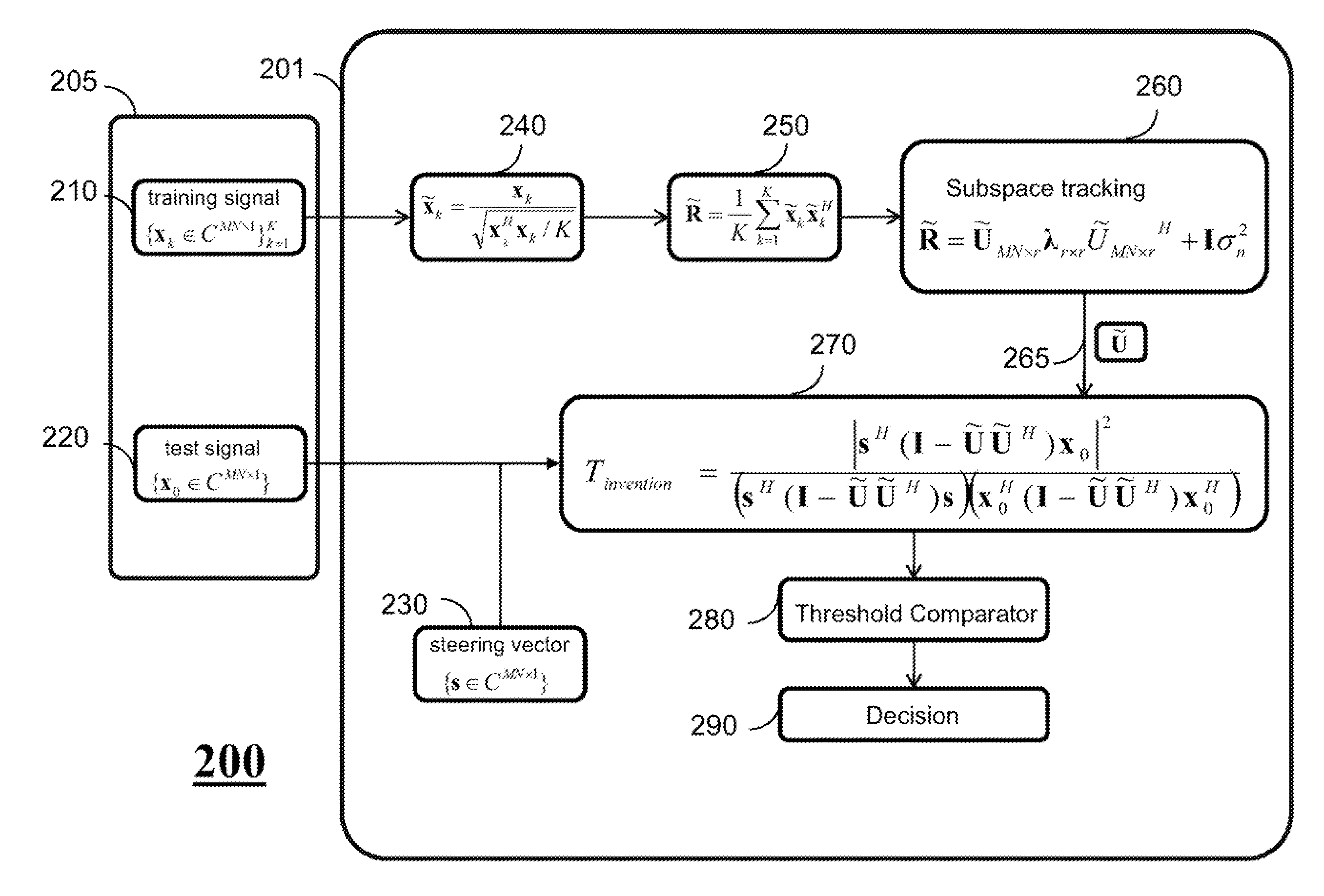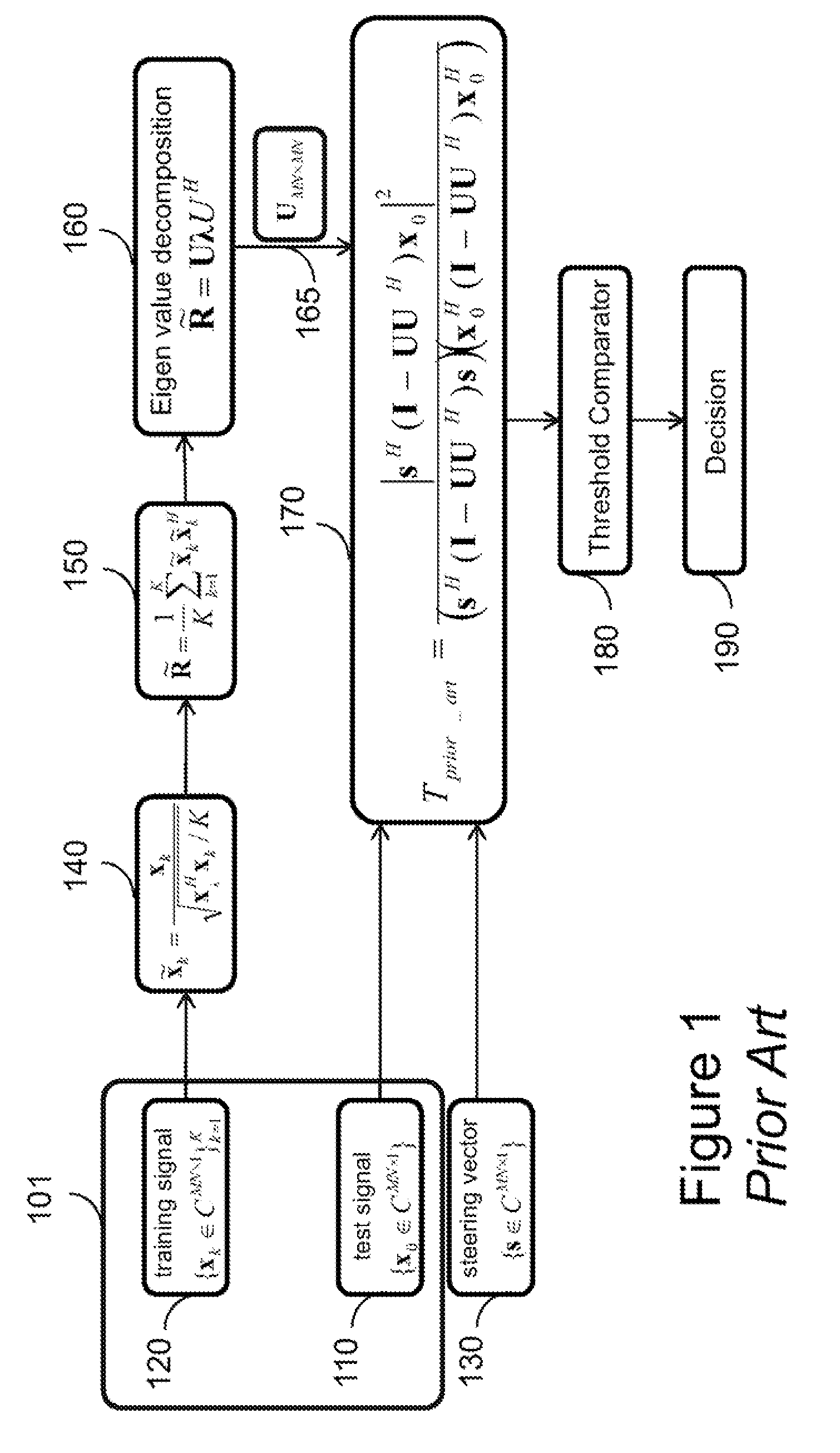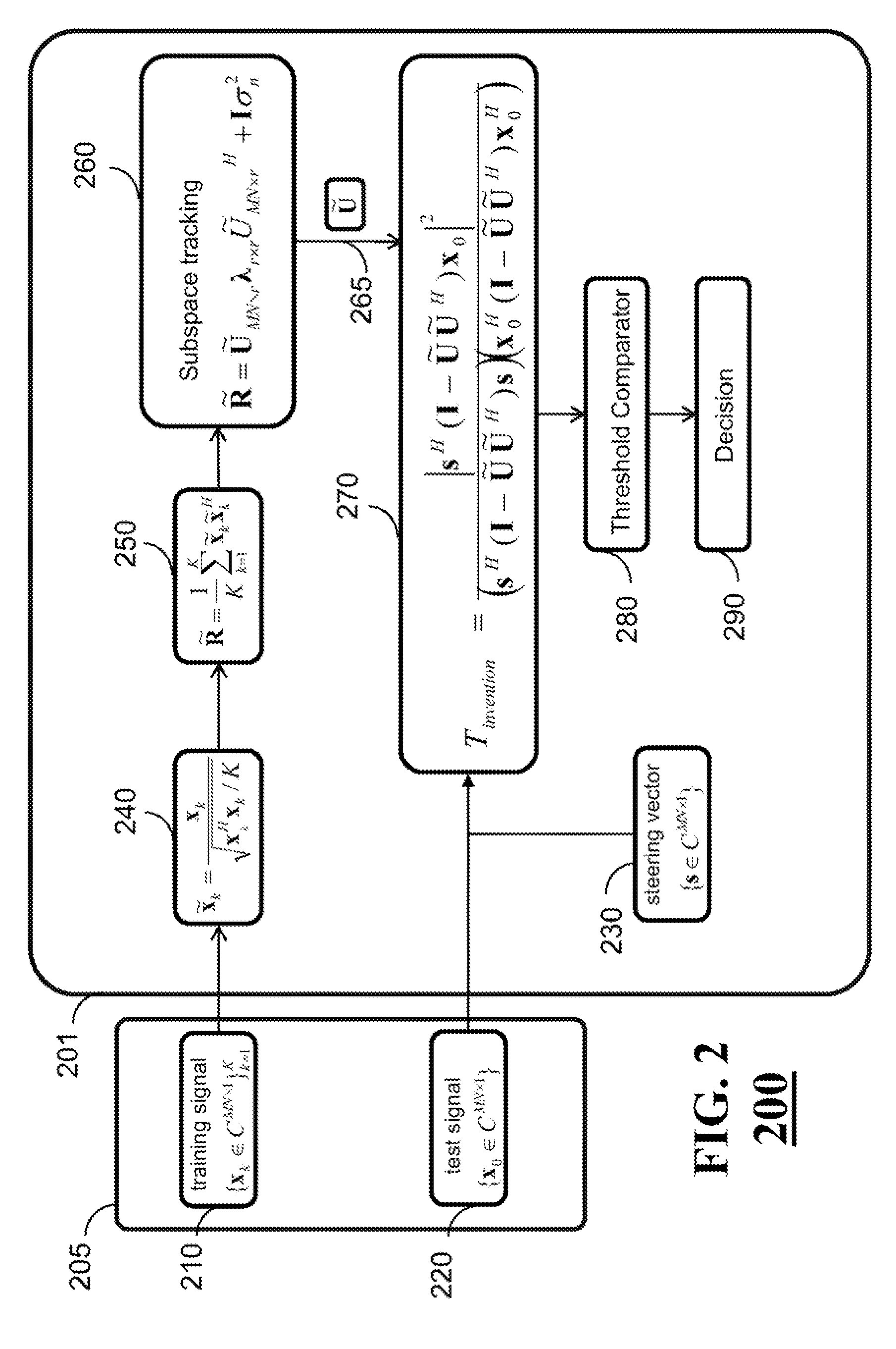Method for Detecting Targets Using Space-Time Adaptive Processing
- Summary
- Abstract
- Description
- Claims
- Application Information
AI Technical Summary
Benefits of technology
Problems solved by technology
Method used
Image
Examples
Embodiment Construction
[0020]FIG. 2 shows a block diagram of a system and a method for detecting a target in a non-homogeneous environment using space-time adaptive processing of a radar signal. In one embodiment, the system includes a phased-array antenna 205 for acquiring normalizing training data via multiple spatial channels, and a processor 201 for normalizing 240 the training data and for determining 250 a normalized sample covariance matrix representing the normalized training data. Also, the system includes a tracking subspace estimator 260 for tracking the normalized sample covariance matrix to produce a clutter subspace matrix 265. The tracking subspace estimator can be implemented using the processor 201 or an equivalent external processor. Also, the processor determines 270 a test statistic representing a likelihood of a presence of the target in the radar signal based on the clutter subspace matrix and a steering vector 230 and compares 280 the test statistic with a threshold to detect 290 th...
PUM
 Login to View More
Login to View More Abstract
Description
Claims
Application Information
 Login to View More
Login to View More - R&D
- Intellectual Property
- Life Sciences
- Materials
- Tech Scout
- Unparalleled Data Quality
- Higher Quality Content
- 60% Fewer Hallucinations
Browse by: Latest US Patents, China's latest patents, Technical Efficacy Thesaurus, Application Domain, Technology Topic, Popular Technical Reports.
© 2025 PatSnap. All rights reserved.Legal|Privacy policy|Modern Slavery Act Transparency Statement|Sitemap|About US| Contact US: help@patsnap.com



